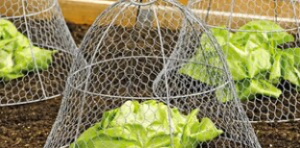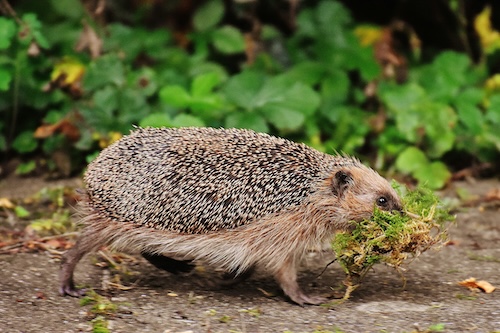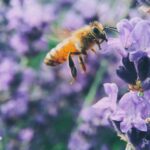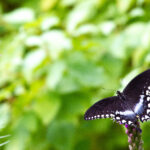While gardening is rewarding, the truth is it takes some care to prevent our efforts from being foiled by wildlife. So what to do to protect your vegetable garden from deer, rabbits, chipmunks, and the like?
We would recommend that you use preventive measures for keeping out animals that are found in your area. The following tips illustrate an integrated approach utilizing;
- Exclusion,
- Repellents, and
- Deterrents…
which will get you well on your way to keeping your plants and vegetables safe from harm.
Exclusion with proper fencing provides the most reliable and effective way to keep unwanted visitors out of your garden. Chicken wire with 1 inch or smaller mesh is most widely used for this application. There are many ways to build a fence, from simple to elaborate. In searching for tips on chicken wire fencing, we found this article on “How to Keep Pests Out of Your Garden with Wire Mesh”. It contains 8 steps that are helpful in determining how to build a chicken wire fence that is both safe and effective. This article on “Install a Critter Proof Garden Fence” is another example of one that requires some skill and may cost more initially but may be worth it to save your plants in the end.

Chicken wire cloches can protect plants from birds, rabbits and cats. A quick search on the internet and you can even find row cloches that will cover more than just single plants.
Raised Beds that are 2 feet or taller also can limit critter damage, especially if you add a short fence on top. If you are starting with a new raised bed and it is open to the earth on the bottom, lay chicken wire on the bottom extending a few inches beyond the perimeter of the bed to prevent burrowing animals from entering your garden bed. As an added precaution, add netting to the top of the bed to prevent damage from deer and birds. Another advantage to raised bed gardens is that you can fill it with high quality soil, which may impact your vegetables and herbs in a positive manner. Since there are a wide variety of raised bed options at varying costs, take time to understand options and pricing before deciding. This article on Nine 2024 Raised Bed Options can be helpful. Please keep in mind that you can be creative in using materials that you have available for fencing. In the pictures below, one of our garden club members used a combination of chicken wire and shingling materials to deter pests in her three raised bed gardens with great success!
Repellents can be used either as perimeter repellents to keep animals from entering an area or contact repellents that would be applied directly onto the plant to deter the animal from eating the plant. Best to keep these ecofriendly and safe. Example: Sprinkle hot or strong-smelling spices like cayenne pepper, garlic spray, Epsom salts, vinegar or peppermint oil around the plants.
Note: repellents can be affected by weather and will need to be reapplied after rain.
Repel with plants! Beautify and drive away animals by planting lemongrass, lavender, mint, marigolds, sage, chrysanthemums, and geraniums. In your gardens, consider planting strong smelling herbs on the perimeter (parsley, sage, basil, etc.) and more mild smelling vegetables in the interior of the garden plot.
Deterrents will vary based on the variety of pests and animals that you find in your garden. Some general tips include the following:
- Place colorful, metallic pinwheels on the fence posts, which will deter birds and animals. “Garden owls” and scarecrows can also be effective.
- You can also try motion activated lights and sprinklers to deter animals.
- Your family dog can act as a deterrent, so let them out often. Their scent will deter many pests.
- Follow this link for more deterrent tips: https://www.familyhandyman.com/list/how-to-safely-deter-animals-that-steal-from-your-garden/
DEER
If you are just starting a garden and know that deer are in the area consider installing a fence prior to planting a garden. A 7-to-8-foot sturdy fence or ideally a double fence, 4 feet or taller, is required. Deer won’t leap over a fence if they don’t see a safe space to land. Don’t use a standard plastic mesh fence, they will crawl under it and other animals will chew holes in it. Secure the bottom of the fence with steel wire strung tightly from post to post. Deer tend to stay away from strong smelling plants so planting bee balm, lavender and foxglove will discourage them. Smells like rotten eggs or garlic could also help. Regularly spray predator urine around your garden’s perimeter (sold commercially). Scare deer away with a motion triggered device. Try rosemary, garlic and oregano as good barrier plants.
RABBITS, SQUIRRELS AND CATS
A low fence made of 2 to 3 feet chicken wire with 1 – inch or smaller mesh will exclude rabbits. To prevent them from pushing under the fence make sure the bottom is tight to the ground or bury it a few inches. The chicken wire cloche, the bell-shaped covering pictured above can also protect from rabbits, cats, chipmunks, and birds. Row covers for the bed can also be used by using some breathable netting and flexible. piping for the hoops over the garden. Be careful, if you cover with a breathable cover, you may need to water more frequently. Raised beds that are two feet or taller also can limit rabbit damage, especially if you add a short fence on top.
WOODCHUCKS
Woodchucks are burrowers and good climbers. Fences that are at least 3 feet high and sturdy are your best bet for keeping them away from your garden. To discourage burrowing, bury the lower edge of the fence 10 to 12 inches below the ground. You can also try to angle the top 12 inches of the fence outward at a 45 degree angle. Please review this information from the Mass Audubon Society on woodchuck deterrence for a detailed description of how to construct fencing to keep woodchucks away.
CHIPMUNKS AND SQUIRRELS
A short fence or electrified netting will work for most rabbits, squirrels, and chipmunks. The dome shaped cages made of fine mesh, ½ inch or less to exclude the chipmunks, can protect specific individual plants, or small rows until the plants mature. You can use chicken wire, hardware cloth, or rabbit fencing.
SLUGS AND SNAILS are also some of the most common and destructive garden pests, and below are tips for addressing these creatures:
- Apply a barrier of Diatomaceous Earth (DE), a powder containing tiny sharp fragments that hurts snails and slugs or use slug and snail bait that is nontoxic to humans and wildlife.
- Try planting red clover around your garden as a sacrificial plant.
- Remove slugs and snails with your hands each morning. Place them in soapy water to kill them.
- Buy a snail and slug copper barrier and lay two-to-three-inch strips around your plants. Copper barriers are expensive, so you may want to save them for your favorite plants.
APHIDS AND CHEWING INSECTS
• For tips on how to keep insects at bay, view this informative video on using an Organic Pest Control Spray, which will be helpful in controlling aphids and chewing insects.
What to Do In June
- Evaluate your garden daily, including placement of crops, growth and progress, and pest control. Modify as necessary and continually water and maintain your garden. Water early a.m. or later in the afternoon. Avoid mid day watering. Don’t be afraid to try new techniques and ask for advice!
- Order your soil analyses ASAP – UMass Amherst currently is operating at a 8-12 business day turnaround. For instructions, click here. Services: Ordering Information & Forms | Center for Agriculture, Food, and the Environment at UMass Amherst
- Prepare and amend your soil (https://framinghamgardenclub.org/2023/04/preparing-your-soil)
- Add trellises or other supports to climbing plants – DIY to save money
- Sow your warm weather seeds, as you harvest vegetables, plant additional crops with new seeds.
- Mulch your seedlings and weed your garden frequently.
- Diligently water – in this warm, sunny weather consider watering several times a day.
- In general, we need to co-exist with wildlife in our gardens. They play an important role in maintaining a balance and biodiversity in our yards. If you know ahead of time you have some critter challenges, start some of the deterrents early in the spring so you are teaching the animals, especially deer, to stay away. So if it is a spray deterrent, start spraying in April when the young plants are emerging from the ground.
For more tips, information and resources, please visit us at www.framinghamhgardenclub.org/resources-information/










